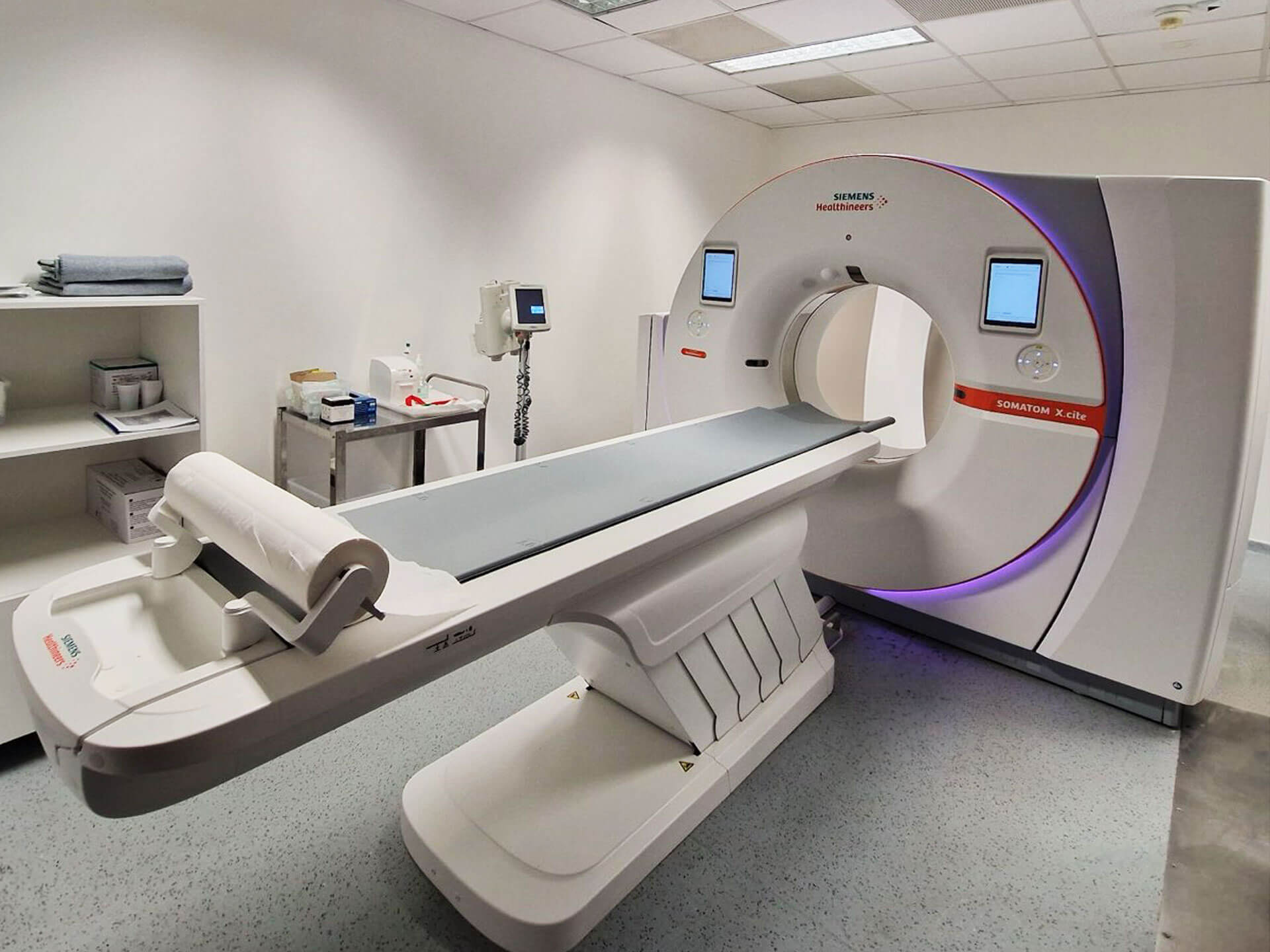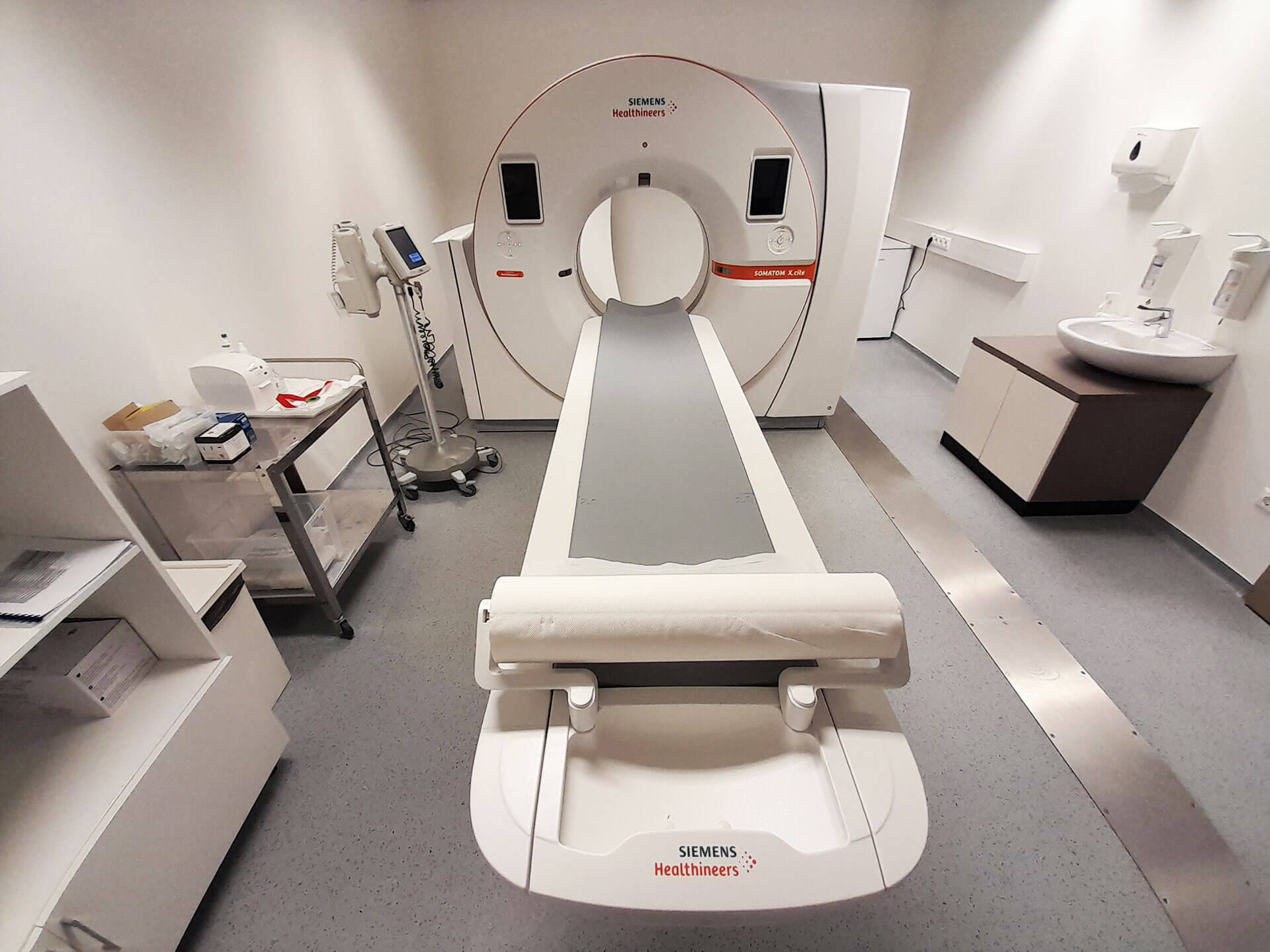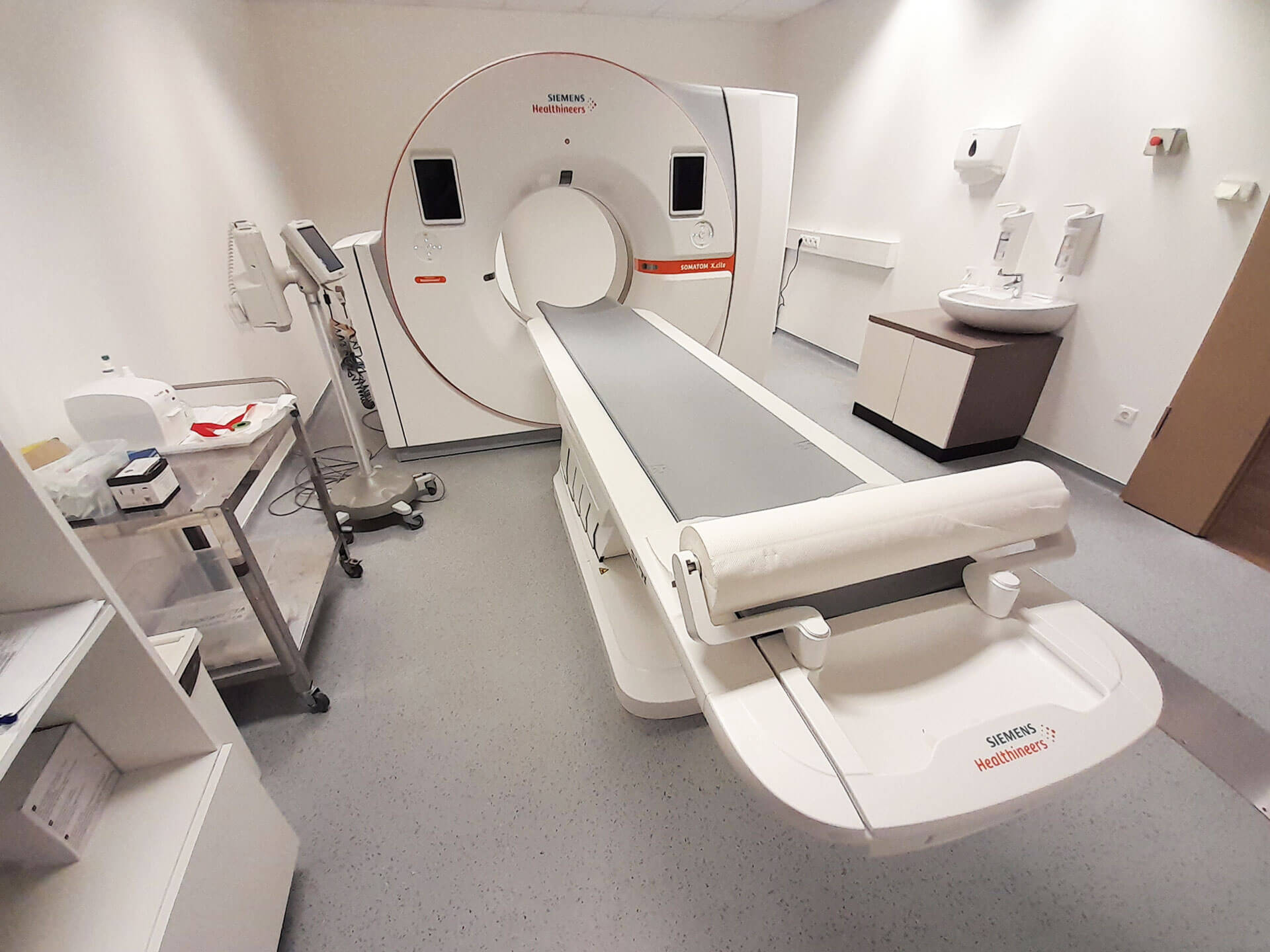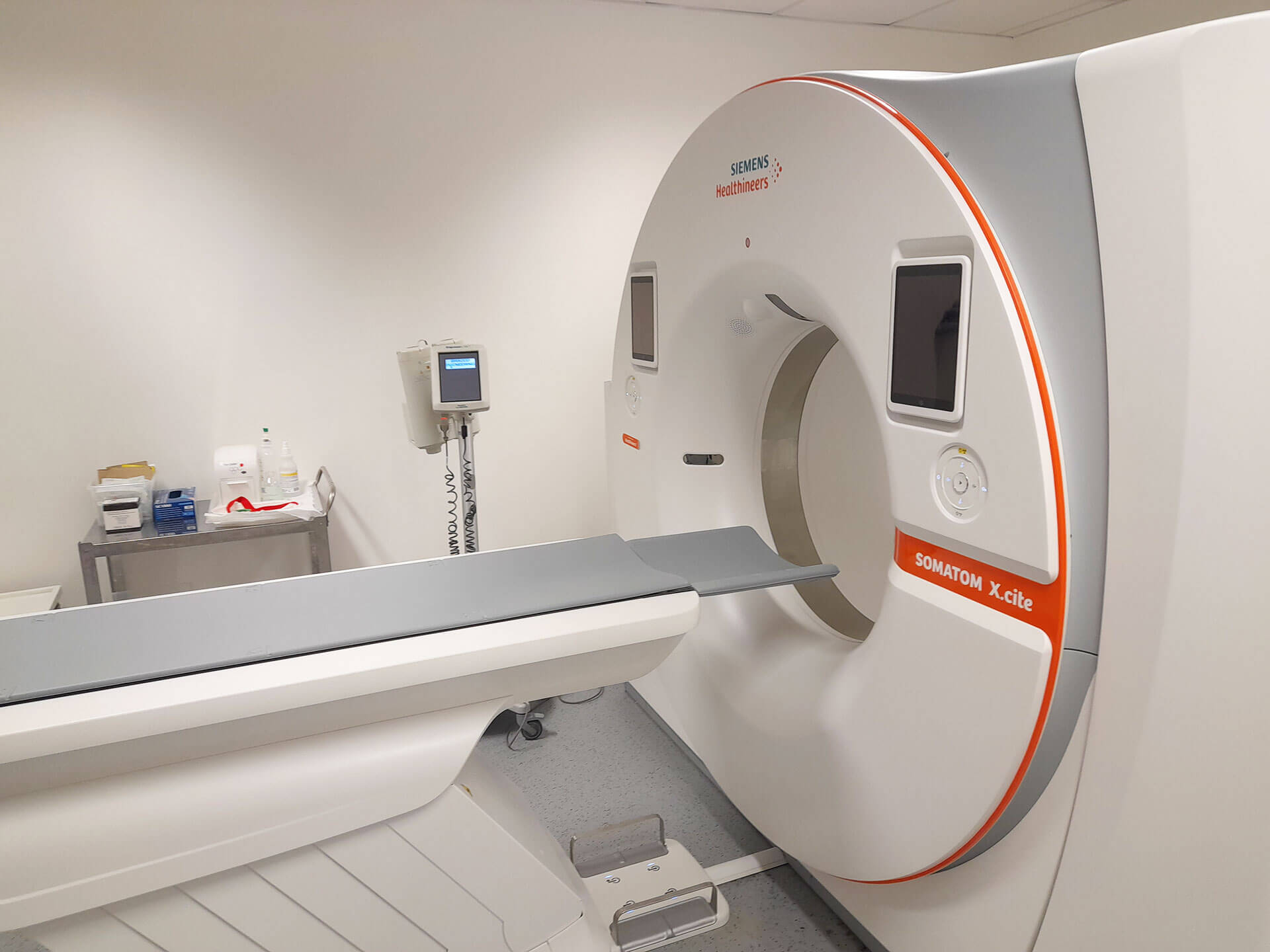CT scans
CT, or computed tomography, is a special X-ray that uses x-rays to take anatomically accurate images of the human body and internal organs.
Computed tomography breaks the body part to be examined into image slices a few millimetres in size, and then the device maps these slices by emitting x-rays. These x-rays pass through the body and are absorbed differently in each tissue and organ. If the structure of a tissue changes as a result of an abnormal process, its radiation transmittance or radiation absorption capacity also changes, so that the change becomes visible in the image. The rays passing through the tissues are captured by the X-ray detector, and the signals thus obtained are converted into an image by the computer.
With the help of the examination, cancerous and pathological lesions, bleeding, internal injuries, and inflammations can also become visible.
New high-tech CT scan machine at Medicover
Somatom X.cite is Siemens Healthineers’ premium category, 128-slice CT scan machine, which was the first to be installed at Medicover in Hungary. This high-tech equipment supports modern radiological diagnostics with software solutions based on artificial intelligence. The 82 cm bore of Somatom X.cite is the largest among diagnostic CT machines, which provides a feeling of openness and a comfortable examination. The load capacity of the CT table exceeds 220 kg, enabling the safe examination of all patients.
The equipment has several dose reduction and image quality improvement solutions, increasing patient safety. The tin filter, developed and patented by Siemens Healthineers, reduces excess X-ray radiation without compromising image quality, especially during low-dose screening examinations. This makes it possible to produce a chest CT scan consisting of hundreds of images with the dose of a few X-rays, or a sinus CT scan with the same radiation dose as a single X-ray. Thanks to its unique technology, the machone works mainly in the low tube voltage range, reducing the radiation exposure of the patient, improving the contrast of the image (pathological deviations can thus be distinguished more easily), and reducing the amount of injected intravenous contrast agent, thus protecting the patient’s kidney function.
Somatom X.cite uses Siemens Healthineers’ most advanced model-based reconstruction algorithm, ADMIRE, which can provide up to 85% lower radiation exposure compared to conventional imaging, maximizing the protection of our patients. The machine is suitable for examining any part of the body, including the examination of the heart, thanks to its unique technological solutions and the 0.3-second rotation time, which allows the X-ray tube to rotate around the patient three times per second. Thanks to this, each recording only takes a few seconds, while a complete scan takes a few minutes.
Somatom X.cite is constantly looking out for you! Making the work of our colleagues easier, the CT machine automatically plans the examination, sets the examination parameters precisely, creating a balance between image quality and radiation exposure. After the recordings have been completed, it checks the quality of the images together with the operators performing the examination and, thanks to artificial intelligence, performs post-processing automatically.
Thanks to this, and the built-in patient monitoring cameras, our colleagues have more time to pay attention to you before, during and after the examination.
When is a CT scan necessary?
CT examination is recommended if the diagnosis cannot be clearly determined after physical or other diagnostic examinations (ultrasound, X-ray, MRI).
Because CT involves radiation, a specialist consultation is always required before the examination, where the specialist will consider whether the examination is necessary based on the symptoms.
Due to radiation exposure, a CT scan should only be performed based on a medical recommendation.
In case of accidents, trauma (minor ankle, knee, shoulder, arm, elbow, hand, and wrist injuries or bruises), computed tomography is also used to determine the extent of the injury.
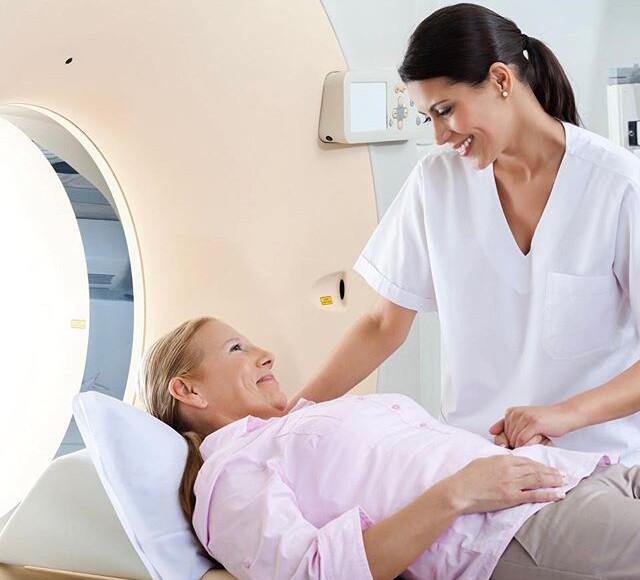
Body parts that can be examined with CT
- cranium
- visceral cranium
- paranasal sinuses and orbits
- pharynx, larynx, thyroid
- lungs
- chest
- abdominal, pelvic organs
- small intestine, colon
- cervical, thoracic, lumbar, or whole spine
- extremities
How do I prepare for the examination?
- The examination does not require special preparation. However, if a CT scan with contrast agent is performed, it is important that you arrive for the scan with an empty stomach, so do not eat food for 6 hours before the examination.
- In case of abdominal and pelvic examinations, please always arrive with an empty stomach.
- The small intestine is examined after consuming a fluid containing a contrast agent.
- A scan with contrast agent requires a laboratory finding which is not older than 1 month that includes keratin and urea levels to check kidney function.
- Prior a CT scan with contrast agent, metformin medications for diabetes should be discontinued 48 hours prior to the examination and resumed 48 hours after the scan. Be sure to consult your doctor about any medications you need to stop taking before the test!
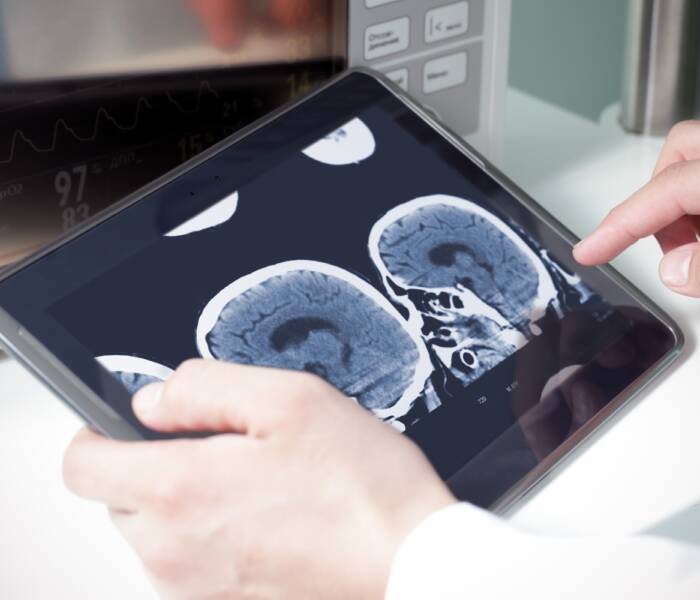
What happens during the scan?
Prior to the examination, the operator performing the scan gives detailed information about the course of the examination. Throughout the process, you can communicate with our colleague through a microphone and speaker.
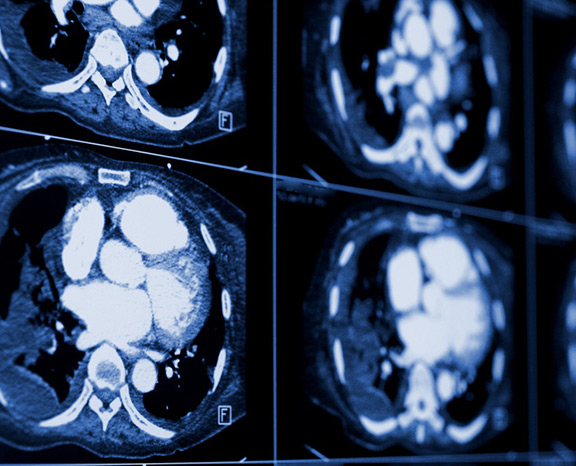
- Following the pre-examination orientation, the operator enters the CT examination room and asks you to lie on the examination bed.
- The operator adjusts the body position required for the scan (the examination is usually performed in a reclining position) and then the examination bed lifts you into the examination cylinder.
- During the san, the examination bed sometimes slides deeper and further into the cylinder as the sensor head (detector) rotates around you several times.
- It is important that you remain still during certain parts of the examination, you can only change your body position if the operator gives you permission or asks you to do so.
- In the case of a scan with contrast agent, the contrast medium is administered intravenously and/or orally, depending on the type of examination.
- The scan takes an average of 15-20 minutes.
When is contrast agent necessary?
The contrast agent is an iodine-containing drug compound that is injected directly into a vein by the operator, and/or you take it orally.
Our colleagues use a certain amount per kilogram of body weight, thus avoiding unnecessary strain on the body. The contrast agent makes it easier to see the condition of the soft tissues and blood vessels, and we can get a more accurate picture of the location, extent and type of a lesion.
Following an examination with contrast agent, it is recommended to consume plenty of fluids to clear the foreign matter from the body as soon as possible and to facilitate the work of the kidneys. For some scans, the non-contrast – native – scan is sufficient, other examinations can only be performed with contrast agent. This is always determined by your doctor.

The condition for the administration of the contrast agent is that you have an adequate kidney function value, which can be confirmed even with a recent laboratory finding, but it is possible to perform a rapid creatinine test or eGFR measurement with the help of the MR/CT operator, which is done by puncturing the fingertip.
What are the benefits of the examination?
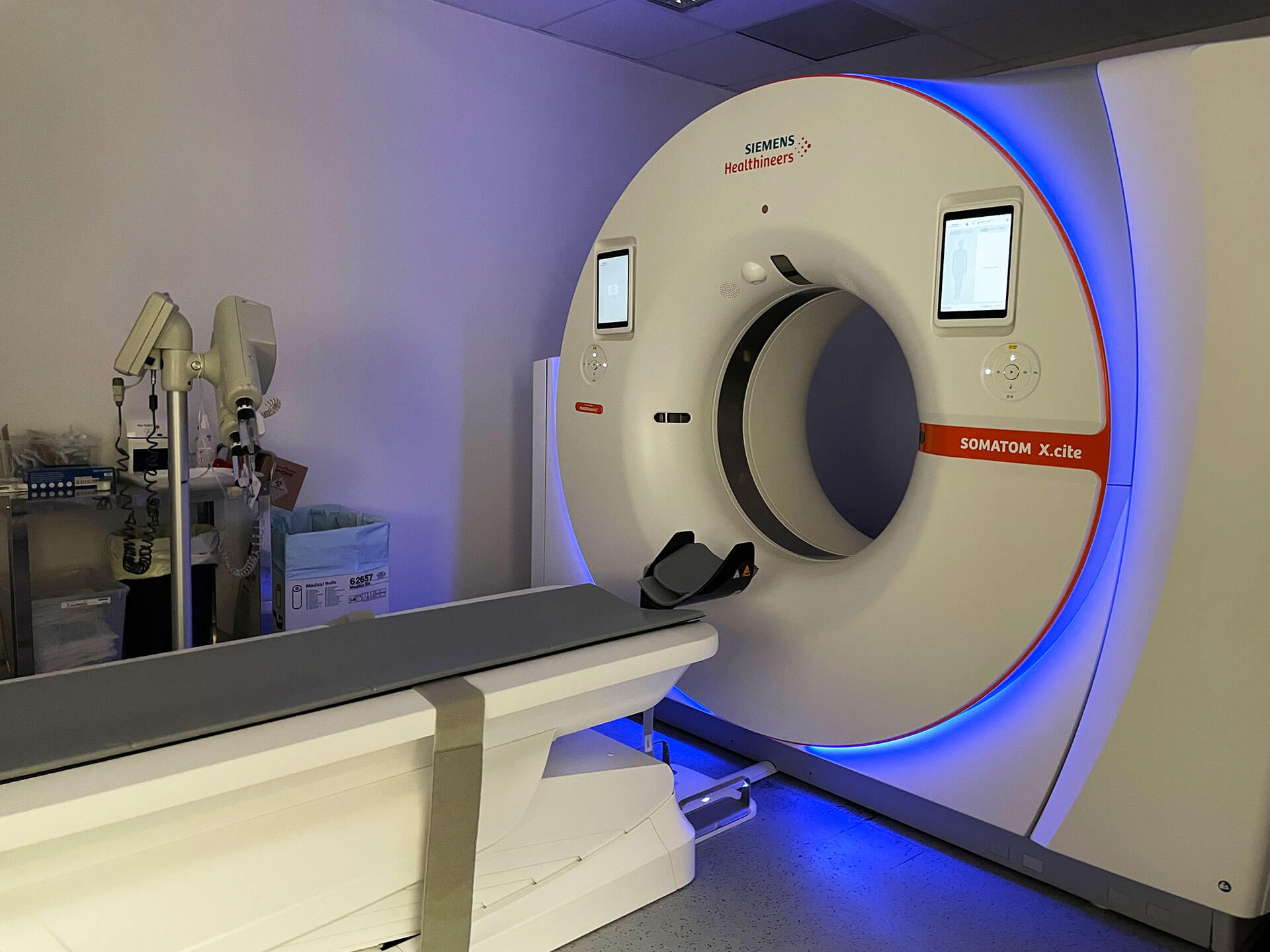
- Fast
- It produces a reliable, anatomically accurate, precise image
- Completely painless
- Low risk
- Patients with a pacemaker can also be examined
- It can also be used in case of people with mild claustrophobia
- It can also be performed on patients living with an implant, implanted metal or prosthesis
Is the examination risky?
- Thanks to modern technology, it has minimal radiation exposure
- Side effects of the contrast agent are very rare and are usually mild and easy to treat
- In case of pregnancy, due to radiation, which may be harmful to the foetus, no CT scan is performed
- At a young age, the examination should only be performed in justified cases to avoid radiation exposure
Does the examination have any side effects?
Apart from a possible reaction to the contrast agent, the scan has no side effects. Allergic reactions may occur within 20 minutes of the administration of the contrast agent. Therefore, in case of nausea, please inform the operator immediately. Our colleague is trained and equipped to deal with these types of side effects.
When can the examination not be performed?
No CT scan is performed during pregnancy. For young people, other diagnostic methods – ultrasound, MRI – are preferred to avoid radiation exposure.
How long does a CT scan take?
The native examination takes an average of 15-20 minutes.
When is the result expected?
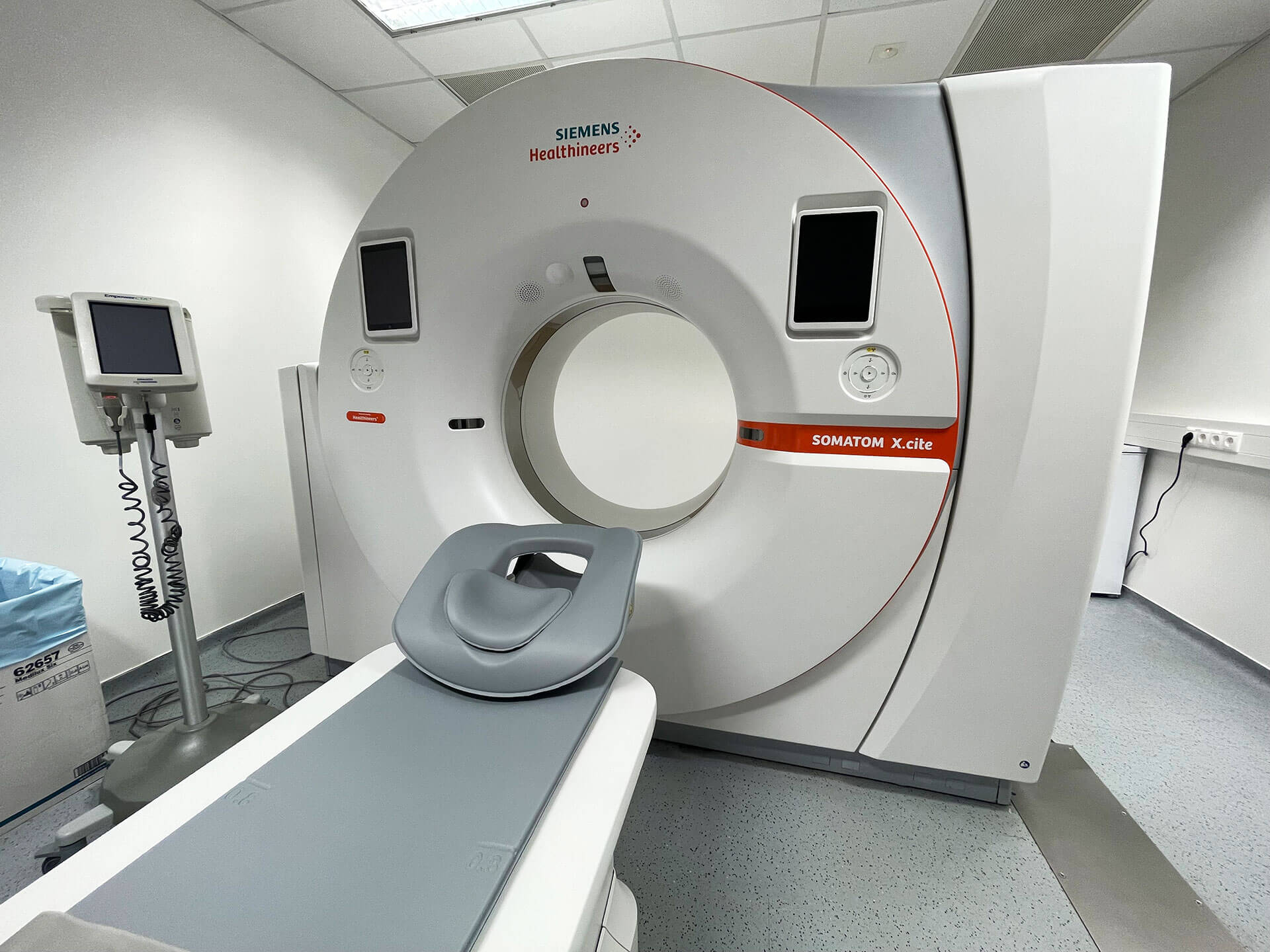
The completed recording will be reviewed by the radiologist and the result will be available in our online system after 3 working days.
 Abdominal and lesser pelvis CT
Abdominal and lesser pelvis CT Cervical soft tissue CT
Cervical soft tissue CT Chest CT
Chest CT Cranial CT
Cranial CT Inner ear CT
Inner ear CT Lumbar spine CT
Lumbar spine CT Orbit CT
Orbit CT Paranasal sinus CT
Paranasal sinus CT Pituitary CT
Pituitary CT Thoracic spine CT
Thoracic spine CT Urography CT
Urography CT